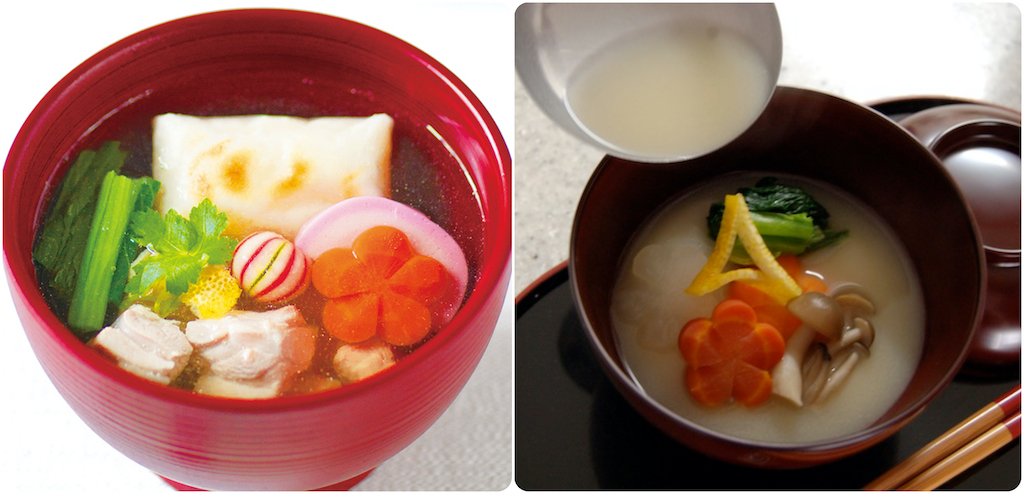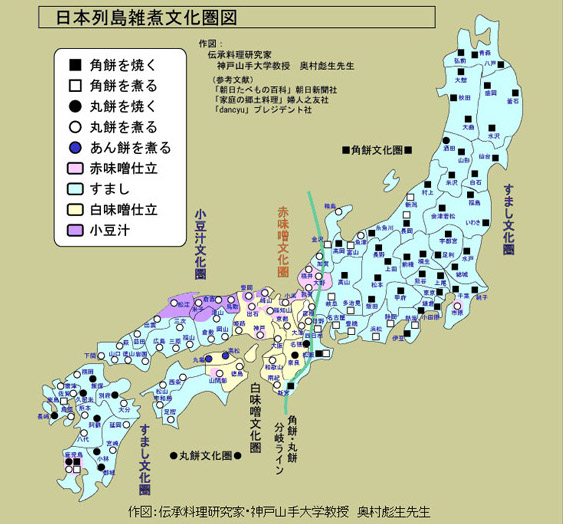
お雑煮
Ozōni
“Honorable Miscellany Stew”
Served for brunch on Gan Jitsu (New Year’s Day), and on many chilly winter mornings thereafter, ozōni is enjoyed throughout Japan. The name of the dish is rather straightforward and descriptive: the “o” is an honorific applied to many valued things while the zō means “miscellaneous” and ni is “to stew or simmer,” which is the method used to make the dish: Honorable Miscellany Stew.
Each region in Japan has its own style; each household its own version. Despite the diversity of ingredients three elements are common to all ozōni:
- omochi (rice taffy) お餅
Either round, hand-shaped and boiled or… rolled sheets, cut into squares, and toasted. The rounds are squishy-soft and loose their shape when boiled; the cut squares brown slightly, puff and split to reveal gooey-soft centers (think roasted marshmallows). - shiru (broth) 汁
Either miso-enriched or… clear (what the Japanese call osumashi).
Broths can be Standard Sea Stock (dashi made from kelp and smoky bonito flakes), vegan Kelp Alone Stock, vegan Sankai Dashi (kelp and dried mushrooms) or Japanese Chicken Stock (Wafū Tori Gara Dashi). - tosan butsu (local delicacies) 土産物
Sourced from both land and sea – vegetables and fish, fowl, sea creatures – local delicacies can be poached, grilled, and simmered or kept fresh (aromatic citrus zest is a favorite garnish).

The map above, drawn by the research group that Professor Ayao OKUMURA (奥村 彪生) headed up at Kobe Yamate University to study folklore and foodways, shows some of the major regional interpretations of ozōni. Map legend (top to bottom in white area upper left):
black square = grilled square omochi
white sqaure = boiled square omochi
black circle = grilled round omochi
white circle = boiled round omochi
dark blue circle = sweet bean-filled omochi, boiled
pink rectangle = red miso broth
aqua rectangle = clear broth
yellow rectangle = white miso broth
purple rectangle = adzuki broth




